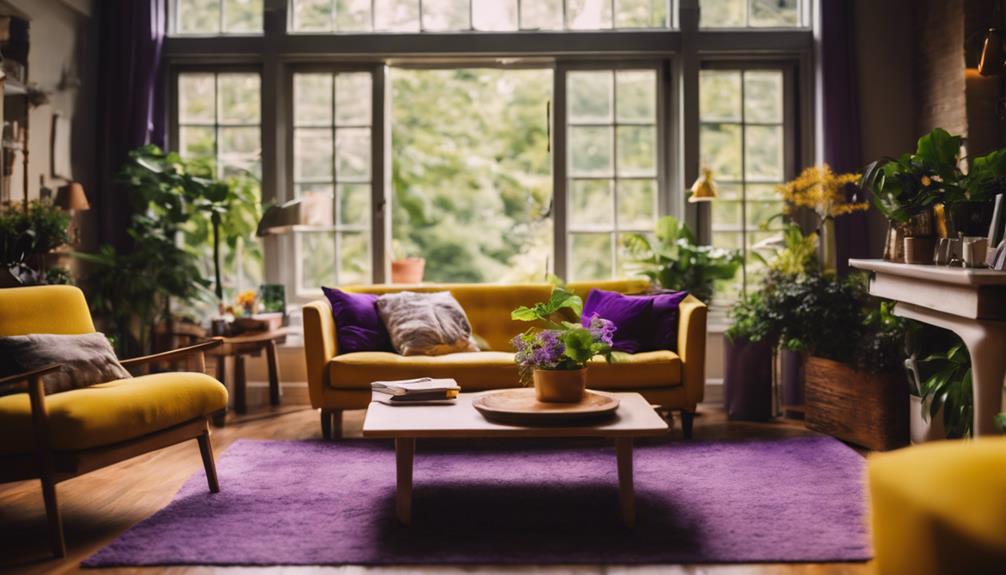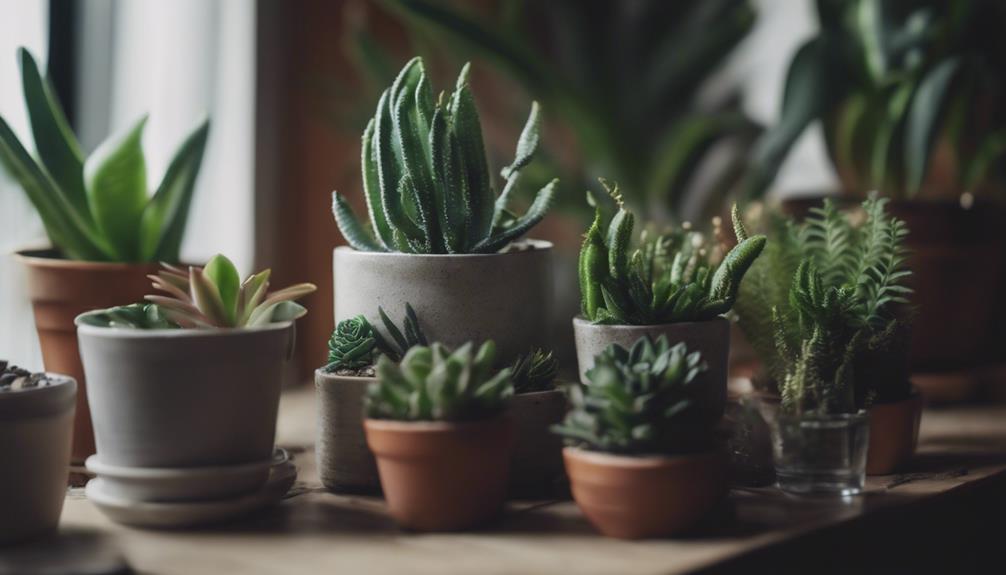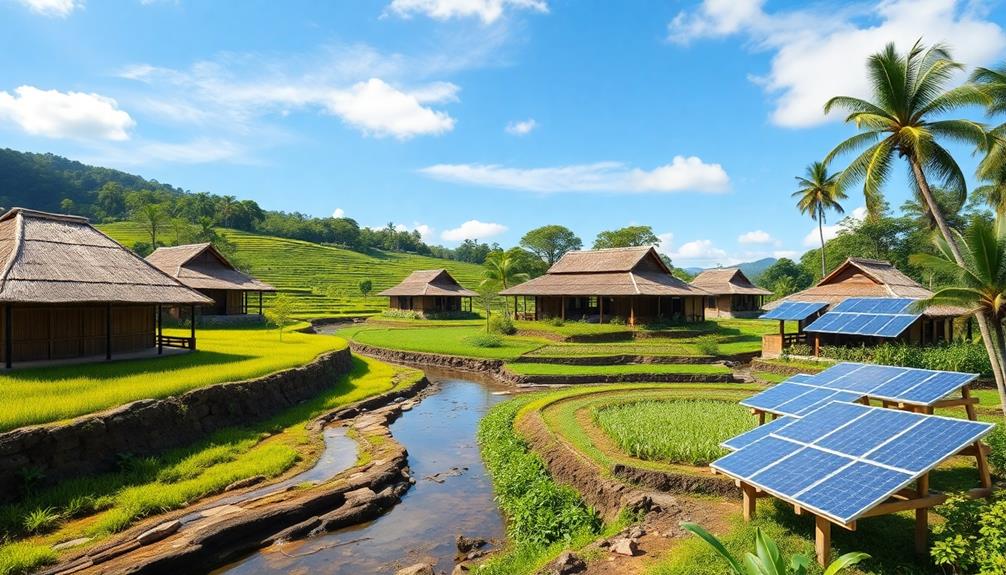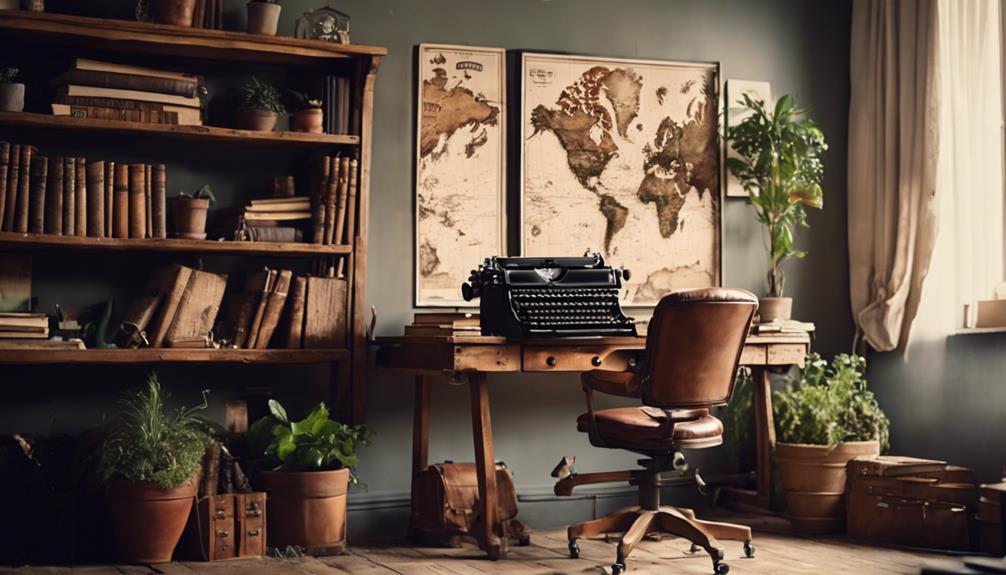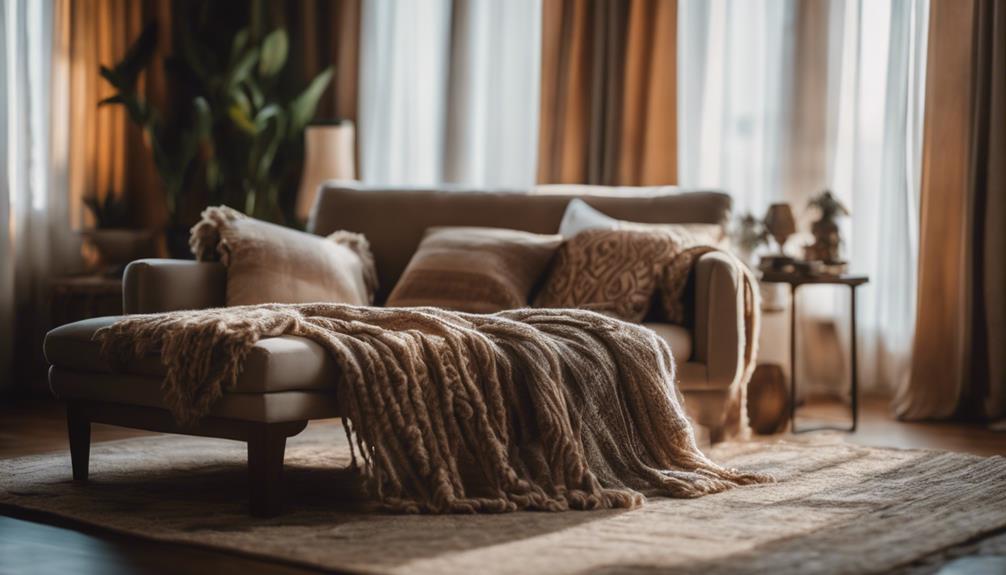As we shift from summer to fall, incorporating yellow and purple hues into our home decor can create a welcoming and inviting atmosphere. Bold yellow accents, rich plum purple walls, and sunny yellow velvet armchairs can add warmth and sophistication to our living spaces. To effortlessly blend seasons, we can swap out lightweight summer curtains for heavier drapes, add yellow and purple accents through throw pillows and blankets, and incorporate fresh flowers in shades of yellow and purple. By harmoniously blending these colors, we'll create a cozy and inviting home that's perfect for the upcoming seasons – and we're just getting started!
Key Takeaways
• Incorporate yellow and purple hues into your home decor to create a welcoming atmosphere for the end of summer season.
• Use bold yellow and rich plum purple as primary color palettes to add warmth and sophistication to your space.
• Add sunny yellow accents throughout your home with throw pillows, rugs, and artwork for a vibrant touch.
• Create a cozy living room nook with yellow velvet armchairs and purple accent walls for a harmonious blend of seasons.
• Refresh your outdoor patio with yellow and purple accent pillows, string lights, and flowers to extend the summer vibe.
Welcoming Entryway Style
As we step into our homes, we want our entryway to exude warmth and hospitality, setting the tone for the rest of our living space. A thoughtful first impression is important, and incorporating a touch of yellow and purple into our decor can create a welcoming atmosphere.
For the first time, we might consider a bold, sunny yellow or rich plum purple as our primary color palette, and love seeing how these hues complement each other. To take it up a notch, we can add a yellow and purple floral wreath to our front door, creating a cheerful and colorful entrance that sets the tone for our end of summer style.
Alternatively, a purple and yellow welcome sign or doormat can also make a warm and inviting statement. Whatever our choice, these color palettes are sure to make our entryway a warm and inviting space that reflects our personal style.
Sunny Yellow Accents Everywhere
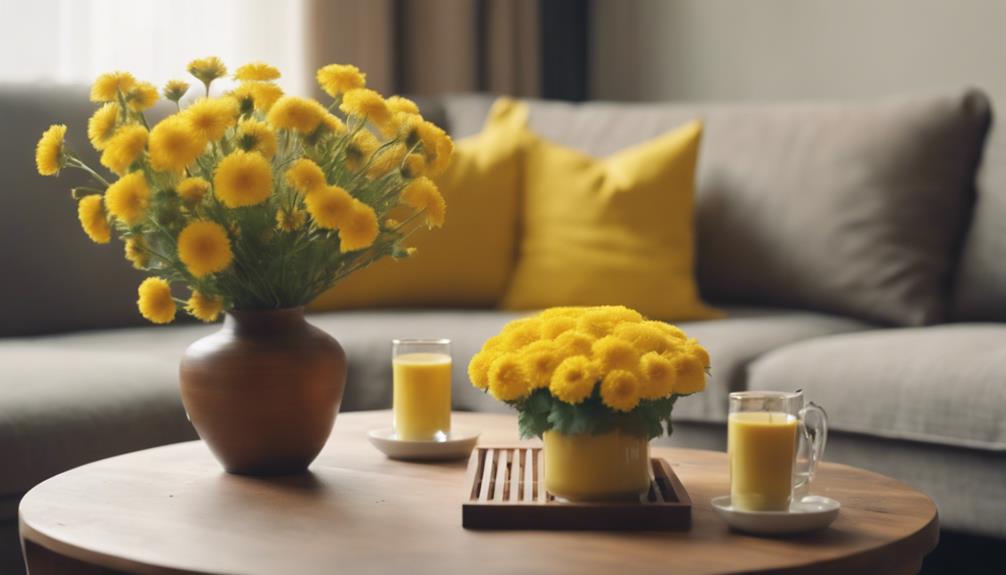
We're sprinkling sunny yellow accents throughout our space to create a cohesive and inviting atmosphere, and it's amazing how these pops of brightness can elevate each room.
Even though we're approaching the end of summer, we're still embracing the warmth and energy that yellow brings. Yellow throw pillows, rugs, and artwork add a burst of sunshine to each room, while sunflower vases, lemon-colored curtains, and mustard accent chairs bring warmth and cheer to the decor.
The kitchen showcases a sunny yellow backsplash and kitchen accessories for a vibrant touch. Yellow flowers, candles, and decorative items create a cohesive and inviting atmosphere in the home.
Purple Hues Add Sophistication
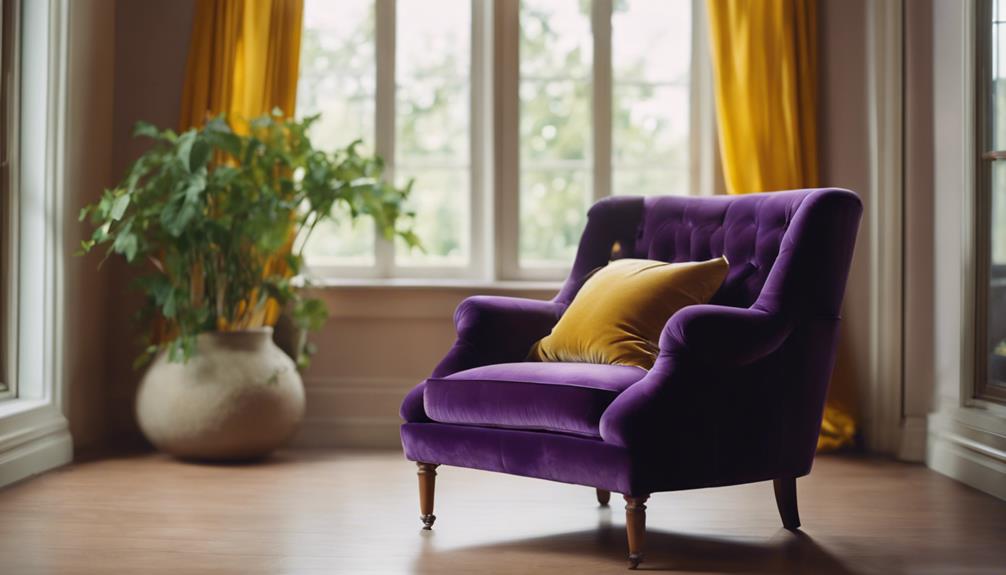
As we explore the world of purple hues, we're excited to highlight the sophistication they bring to any room.
Rich plum accents, with their deep, luxurious tones, can instantly elevate the ambiance of a space, while deep berry shades add a pop of color that's both bold and elegant.
Rich Plum Accents
By incorporating rich plum accents into our decor, we can instantly elevate the ambiance of any room and add a touch of sophistication and luxury. This regal hue adds depth and elegance to our space, especially when paired with yellow. The combination creates a striking and sophisticated color scheme that's perfect for the shift from late summer to fall.
Here are some ways we can incorporate rich plum accents into our decor:
- Consider adding plum-hued throw pillows, curtains, or statement furniture pieces to create a cozy and inviting atmosphere.
- Plum hues work well with a variety of design styles, from modern to traditional, making it a versatile choice for home decor.
- Rich plum accents can add a touch of luxury and sophistication to any room, making it perfect for those who want to elevate their space.
- By pairing plum with yellow, we can create a warm and inviting atmosphere that's perfect for the end of summer season.
Deep Berry Shades
Deep berry shades of purple bring an air of sophistication and luxury to our homes, effortlessly elevating the ambiance of any room. When incorporated into our decor, these rich hues can evoke feelings of creativity, spirituality, and luxury, enhancing the overall atmosphere of a space.
We can incorporate deep berry shades in subtle ways, such as through throw pillows, rugs, or artwork, to create a rich and elegant ambiance. Alternatively, we can make a bold statement by using these shades in furniture pieces, like a velvet sofa or accent chairs.
The beauty of deep berry shades lies in their ability to complement yellow accents beautifully, creating a striking color contrast that adds visual interest to a room. By incorporating these shades thoughtfully, we can create a sophisticated and luxurious space that exudes refinement and elegance.
As we explore the world of purple hues, we're reminded that the right shade can elevate our homes from ordinary to extraordinary.
Cozy Living Room Nook
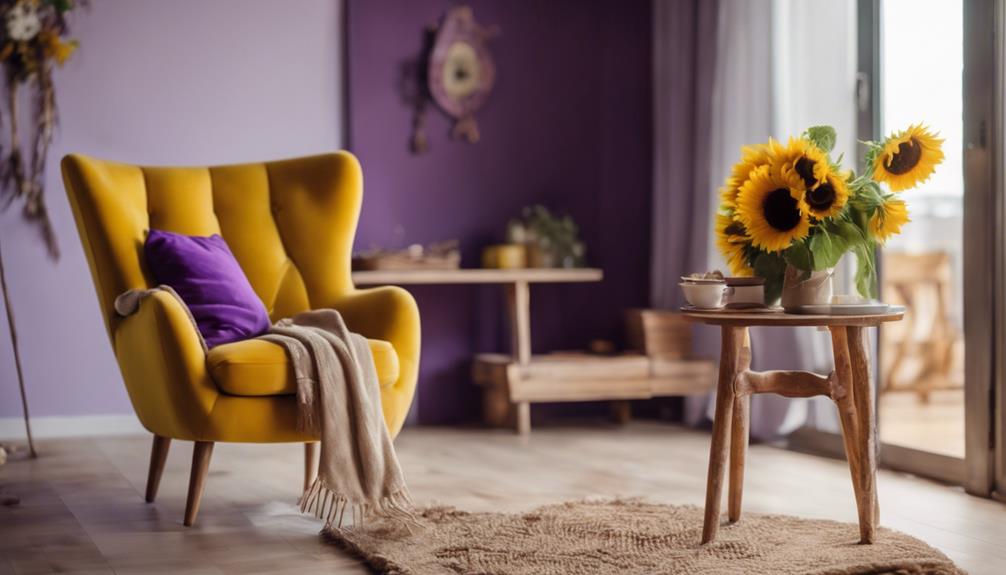
We step into the cozy living room nook, where a plush yellow velvet armchair instantly catches our attention with its vibrant color and inviting texture. As we settle in, we notice the thoughtful touches that make this space so welcoming.
Some of the standout features of this nook include:
- A purple accent wall behind a small bookshelf, creating a focal point and adding a touch of sophistication
- Soft throw pillows in shades of yellow and purple, enhancing the cozy feel of the seating area
- A small side table with a vase of fresh flowers in complementary colors, completing the inviting ambiance
- Natural light streaming in through a window, highlighting the cheerful yellow and calming purple tones in the cozy living room nook
The combination of these elements creates a warm and inviting atmosphere, perfect for curling up with a good book or enjoying a quiet moment of relaxation.
We can't help but feel at home in this cozy nook, surrounded by the soothing colors and plush textures.
Vibrant Kitchen Decor Inspiration
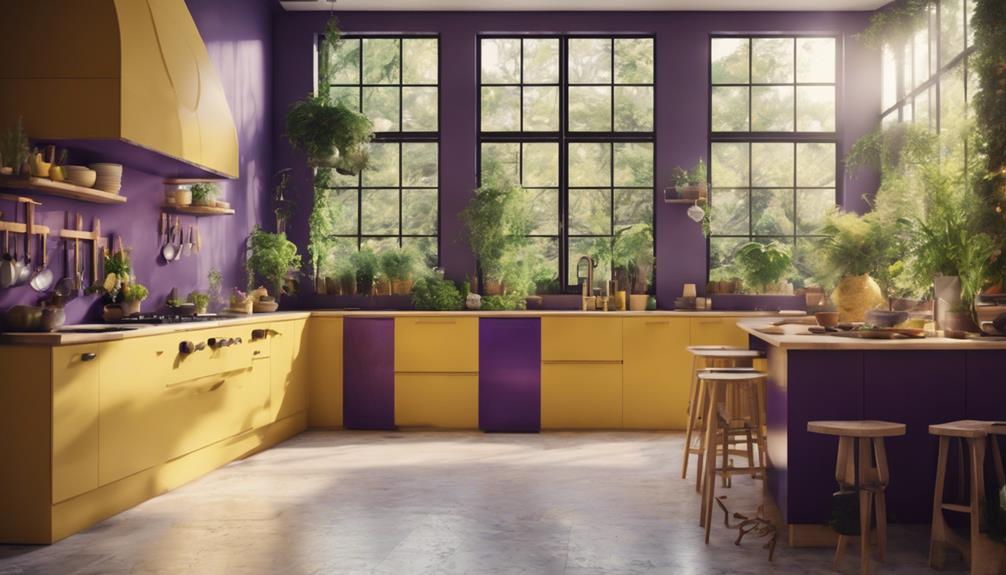
Moving from the cozy living room nook, we're excited to inject a vibrant splash of color into our kitchen, where a thoughtful infusion of yellow and purple accents can elevate the entire space.
To achieve this, we'll incorporate yellow and purple accents, such as kitchen towels, utensil holders, and small appliances, which will add a vibrant touch to our kitchen decor. We can also consider painting a kitchen island or cabinets in a sunny yellow hue to create a cheerful focal point in the space.
Adding pops of purple with bar stools, dishware, or a statement backsplash will give our kitchen a bold and stylish look. Additionally, we'll choose yellow and purple kitchen accessories like canisters, vases, or artwork to complement the color scheme and tie the room together.
Dining Room Table Setting
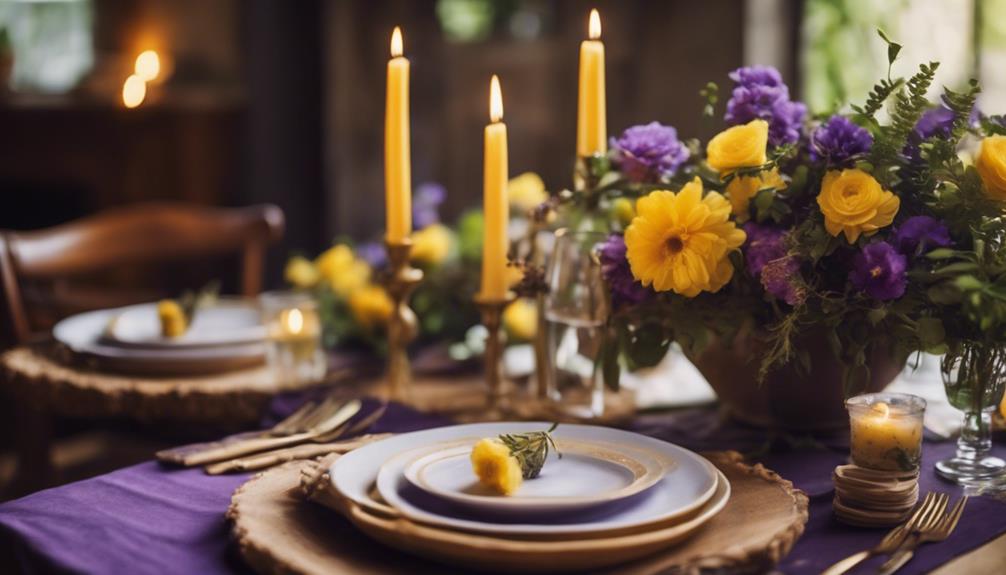
As we step into the dining room, a vibrant and inviting atmosphere greets us, thanks to the bright yellow tablecloth with purple accents that sets the tone for a cheerful end-of-summer gathering. The combination of these two colors creates a sense of warmth and creativity, perfect for a lively get-together.
Here are some standout features of our dining room table setting:
- Sunflowers in a purple vase serve as the centerpiece, adding a pop of color and a touch of nature to the setting.
- Yellow napkins folded neatly with purple napkin rings complement the color scheme and bring a cohesive look to the table.
- Purple and yellow dinnerware, including plates and glasses, tie in with the overall theme and add a playful yet elegant touch.
- The bright yellow tablecloth with purple accents creates a vibrant and inviting atmosphere, setting the tone for a cheerful end-of-summer gathering.
These thoughtful details come together to create a beautiful and inviting dining space, perfect for sharing a meal with loved ones as the summer season comes to a close.
Whimsical Purple Bedroom Oasis
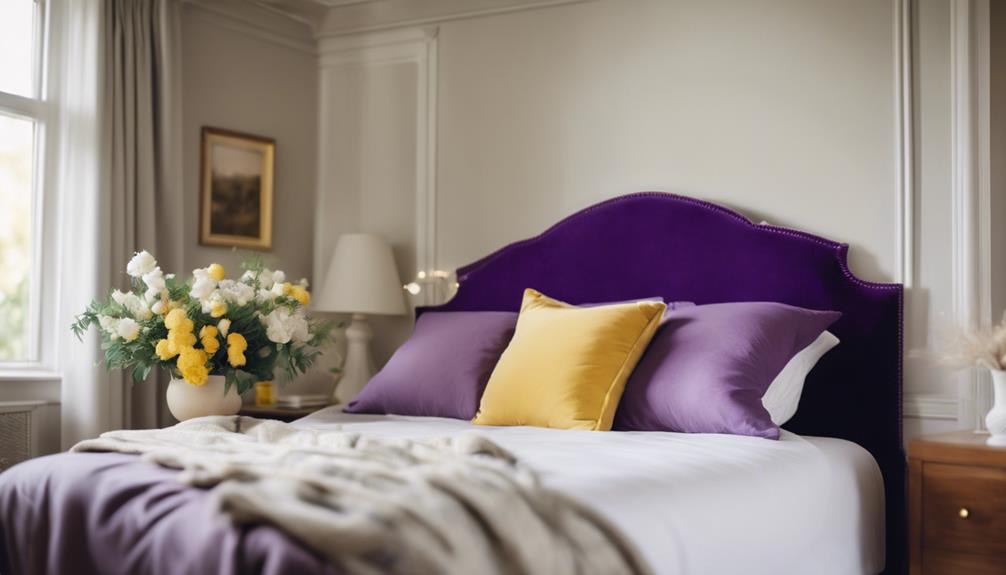
Retreating to our whimsical purple bedroom oasis, we find a serene atmosphere that envelops us in comfort and tranquility. The soothing lavender walls, paired with pops of bright yellow accents, create a playful and inviting ambiance.
To add depth and coziness to the space, we've incorporated a mix of textures, including velvet throw pillows and plush faux fur rugs. Bringing the outdoors in, we've adorned the room with botanical prints and lush floral arrangements, evoking a sense of calm and connection to nature.
Gold accents, found in lamps, picture frames, and decorative objects, add a touch of sophistication and glamour, elevating the space to a luxurious retreat. The result is a dreamy, serene oasis perfect for relaxation and rejuvenation.
In this tranquil haven, we can unwind, recharge, and let our minds and bodies relax, surrounded by the soothing hues and comforting textures that envelop us in tranquility.
Summer to Fall Transitional Decor
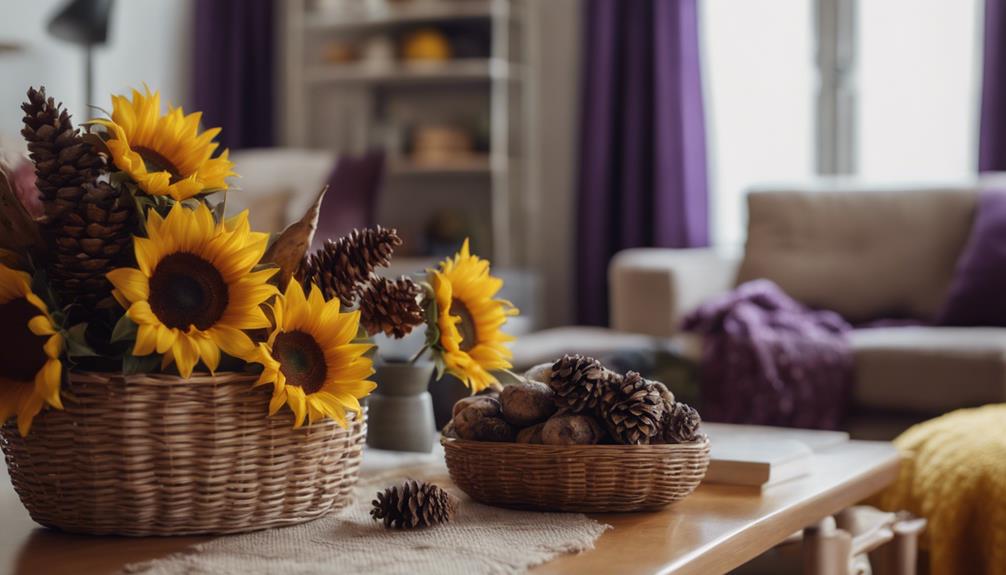
By incorporating touches of yellow and purple into our decor, we can smoothly shift our home from summer to fall, creating a harmonious blend of seasons. As the weather cools down, we want our homes to reflect the changing colors outside.
To achieve this, we can try the following:
- Incorporate yellow and purple throw pillows, blankets, and decor accents to add a pop of color to our space.
- Use fresh flowers in shades of yellow and purple to bring the outdoors in.
- Swap out lightweight summer curtains for heavier drapes in rich purples or yellows to create a cozy atmosphere.
- Consider adding a yellow or purple accent wall to our living space to introduce a bold and vibrant element that reflects the shifting seasons.
Outdoor Patio Refresh Ideas

We're refreshing our outdoor patio spaces with a burst of color and creativity, just in time for the end of summer. As we move from summer to fall, we're incorporating yellow and purple accents to revitalize our outdoor decor.
We're adding pops of color with accent pillows, cushions, and throws to give our patio furniture a vibrant makeover. To create a cozy ambiance in the evenings, we're hanging string lights with yellow and purple hues.
Additionally, we're bringing in a touch of nature by planting yellow and purple flowers in pots or hanging baskets. For a bold statement, we're considering painting a wooden bench or table in a sunny yellow or soothing purple shade.
Frequently Asked Questions
How Do I Mix and Match Different Patterns in My Decor?
When combining patterns, we start with a neutral base, then add a bold print, and finish with a subtle accent – ensuring scales and colors harmonize to avoid visual overload, creating a cohesive, stylish space.
Can I Use Yellow and Purple in a Small, Dark Room?
We're wondering if yellow and purple can work in a small, dark room. Honestly, it's a bold choice, but we think it can be done with balance and restraint, using lighter shades and strategic placement to avoid overwhelming the space.
What Are Some Alternative Ways to Add Purple to a Room?
We're exploring alternative ways to add purple to a room, and we're excited to try using purple-toned rugs, throw pillows, and vases to inject a pop of color without overwhelming the space.
How Do I Incorporate Natural Elements Into My Summer Decor?
We're excited to bring the outdoors in by incorporating natural elements into our summer decor. We'll add potted plants, vintage botanical prints, and woven textiles to create a cozy, organic atmosphere that feels fresh and relaxed.
Are There Any Specific Rules for Transitioning From Summer to Fall Decor?
As we shift from summer to fall decor, we don't believe in strict rules, but we do think a gradual change in color palette and texture helps create a seamless, cozy atmosphere.
Conclusion
As we say goodbye to summer, our homes shift from vibrant and carefree to cozy and inviting. The warmth of sunny yellow accents still lingers, while rich purple hues introduce the sophistication of fall.
As the seasons merge, our spaces evolve, reflecting the harmony of contrasting styles. In the end, it's not about the season, but about creating a haven that whispers warmth, comfort, and beauty, no matter the time of year.
